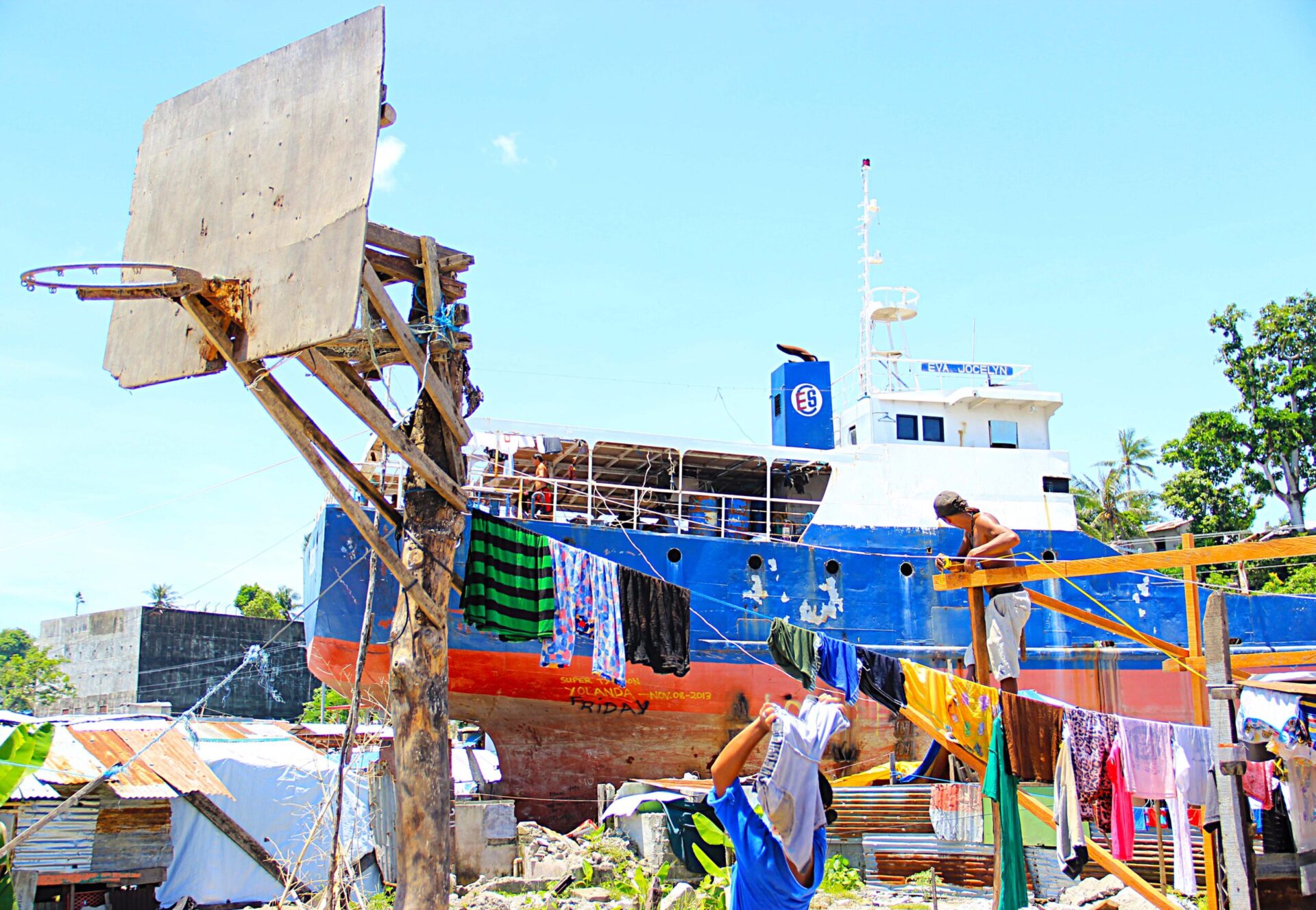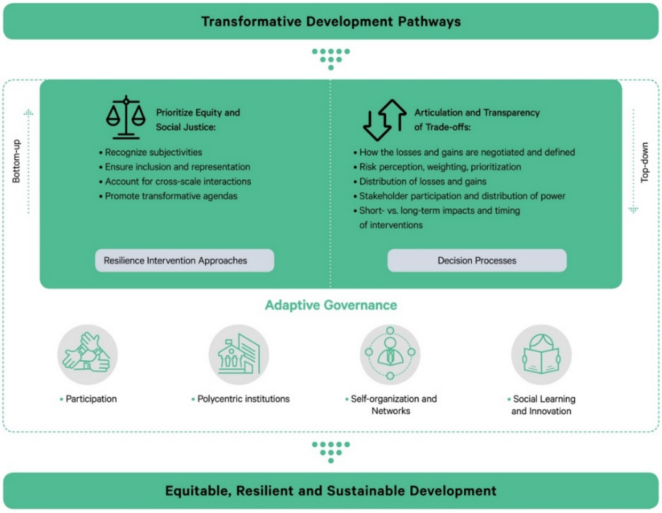A Framework for transforming the relationship between development and disaster risk

Introduction
Development is vital for reducing disaster risk, yet many current development models are unsustainable and are instead driving and creating disaster risks, for example, in the removal of natural storm-surge protection barriers in favour of beachfront property development. At the same time, disasters can destroy development gains, and many existing disaster risk reduction (DRR) and resilience approaches are not sufficiently contributing to social equity and sustainable development.
This Integrated Research on Disaster Risk working paper argues that transformation is a legitimate and necessary pathway for moving from development patterns that increase, create or unfairly distribute risks, towards equitable, resilient and sustainable development outcomes for all. It has been published as part of a new Working Paper Series by Integrated Research on Disaster Risk (IRDR), following the decision of the IRDR Scientific Committee in April 2019 to act to ‘Expand IRDR Network and Scientific Output’ (No. 5 of the IRDR Action Plan 2018-2020).
This paper presents an analytical framework for transforming the relationship between development and disaster risk that identifies three interlinked opportunities for transformation (1) exposing development-disaster risk trade-offs in decision-making and policy; (2) prioritizing equity and social justice in approaches to secure resilience; and (3) enabling transformation through adaptive governance.
We then highlight key findings from an application of this framework in seeking to understand disaster recovery processes in the city of Tacloban in the Philippines following Typhoon Haiyan/Yolanda, which struck in November 2013 – with a specific focus on the extent to which relocated communities are able to access equitable, resilient and sustainable livelihood opportunities.
Download the full paper at the IRDR website. A summary of the framework and the thinking behind it is provided below (please note that references have been removed). See the full text for much more detail.
Background
Progress on DRR is often hampered by its failure to recognise how development processes can act as the root causes of disasters. Increasingly, resilience is seen as the mechanism through which development and DRR can be integrated.
Transforming the relationship between development and disaster risk requires attending to the underlying drivers of risk, but also recognising that those risks have their foundations in the interplay between development and DRR trajectories. Resilience by itself, however, is not enough. Questions of who benefits from resilience and under what circumstances (resilience of what, and for whom?) bring additional complexity. Securing equitable outcomes and, in particular, ensuring that poor and/or marginalized groups benefit from development and DRR investments, requires challenging existing structures, power relations, vested interests, and dominant narratives that persist within systems and maintain and perpetuate poverty, inequality, and vulnerability. Read more on equitable resilience here.
Transformation here refers to challenging dominant values and goals for producing radical changes in the form and function of governance systems critical to development and DRR. This approach focuses on initiating and managing deliberate and desirable transformations toward equitable, resilient and sustainable development.
The TDDR Framework (abridged)
Our approach focuses on initiating and managing deliberate and desirable transformations toward equitable, resilient and sustainable development. This framework, shown in Figure 1 (see below), identifies three interlinked opportunities for transformation, considering the role of (joined-up) bottom-up and topdown approaches:
1. Exposing development-disaster risk trade-offs in decision-making and policy
Though trade-offs in decision-making are inherent, they are largely overlooked and typically hidden within existing systems, structures and norms. To draw attention to such trade-offs and prioritizations, and in pursuit of more coherent development and DRR planning and implementation, we have developed an analytical typology framework consisting of five distinct, but related, trade-off dimensions:
- Aggregation – Refers to the macro-level at which we tend to consider development and DRR gains and losses, and the tendency to focus on the aggregated gains of decisions while overlooking potential losses and how impacts play-out in terms of different aspects (i.e. economic, social and environmental) and scales (i.e. local, national, regional).
- Participation – Focuses on the process of governance; who is included in decision-making processes, how is participation contested and decided, and ultimately whose interests are represented and prioritized.
- Equity – Exposes the uneven distribution of gains, losses and risks from development and disaster risk decision-making processes and outcomes across different scales and social groups.
- Time – Relates to the balancing of short and long-term priorities, and how the distribution of gains, losses and risks can change over time.
- Risk – Concerns how different threats are assessed and addressed – either in isolation or holistically – across scales.
Assessing the potential for trade-offs in these five dimensions can help identify critical issues within ongoing decision-making processes. It may illuminate how development and risk governance processes can create and embed risks, and thus open spaces for more reflective and hoistic decision-making.
2. Prioritizing equity and social justice in approaches to secure resilience
Equity places focus on the needs of those who are disadvantaged by relations of power and inequalities of opportunity, and on how these barriers to human advancement can be identified, understood and addressed. Through an extensive literature review we derived four key aspects that need to be considered if interventions are to work toward equity and social justice:
- Recognizing subjectivities – Subjectivity relates to the lived experiences and affective states of people, and draws attention to the ways in which groups become socially differentiated. Such subjectivities shape how people interpret experiences and information, including those related to disaster risk.
- Ensuring inclusion and representation – Inclusion of diverse social groups based on different social groupings, including gender, age, ethnicity, disability and sexuality, that influence resource distribution and human-environment relationships is vital for confronting the power and inclusion imbalances that exist between different stakeholders.
- Working across scales and levels of governance – Connecting scales, particularly geographical and temporal scales, is an important component of resilience and systems thinking and can also contribute to exclusion.
- Promoting system(s) transformation – Systems transformation is necessary when existing arrangements degrade well-being or increase risks for sections of society.
Equitable resilience in practice requires consideration of these four aspects through methods revealing how actors and institutions support narratives, customs or forms of regulation that subjugate or empower intended beneficiaries. Resilience indicators alone are not enough to support this form of practice.
3. Enabling transformation through adaptive governance
Adaptive governance can facilitate transformative processes. It recognizes that interactions between people and systems are unpredictable and that governance must be able to adapt to evolving knowledge or context to respond to changes and promote innovation. In the TDDR framework, adaptive governance has four key enabling components:
- Participation and collaboration – This component includes social capital, knowledge-pooling, and public participation processes. Opportunities to participate and collaborate among a range of actors and stakeholders is important for transformation to occur.
- Polycentric and multi-layered institutions – Participation and collaboration is only possible if power is shared across different scales and institutions. This enables cross-sectoral institutional linkages and institutional diversity.
- Self-organization and networks – The ability to self-organize and build networks enables multiple voices to form and create platforms for meaningful and significant change.
- Social learning and system innovation – Through shared, social and triple-loop learning, feedback (e.g., checks and balances) is created in the system, resulting in innovation in the governance processes, thus enabling pathways to transformation.

We intend for this TDDR framework and these approaches to be used to bridge development, DRR and climate change silos, and envisage that transdisciplinary and multi-stakeholder partnerships will clarify the practical relationship between global policy agendas and frameworks, i.e. the Sendai Framework, the SDGs and the Paris Agreement on climate change. By applying our framework to a post-disaster analysis – in Tacloban, Philippines – we have uncovered how the relationship between development and disaster risk plays out in context (see full text for details of this case study). Yet, more conceptual and applied research is needed to build a stronger foundational understanding of where and how transformations could and should occur, in theory and in practice, across scales.
Suggested citation
Boyland, M., Ensor, J., Johnson, K., Salamanca, A., Thomalla, F., & Tuhkanen, H.(2019).A Framework for Transforming the Relationship Between Development and Disaster Risk. IRDR Working Paper Series, 16 pages. doi: 10.24948/2019.03
(0) Comments
There is no content